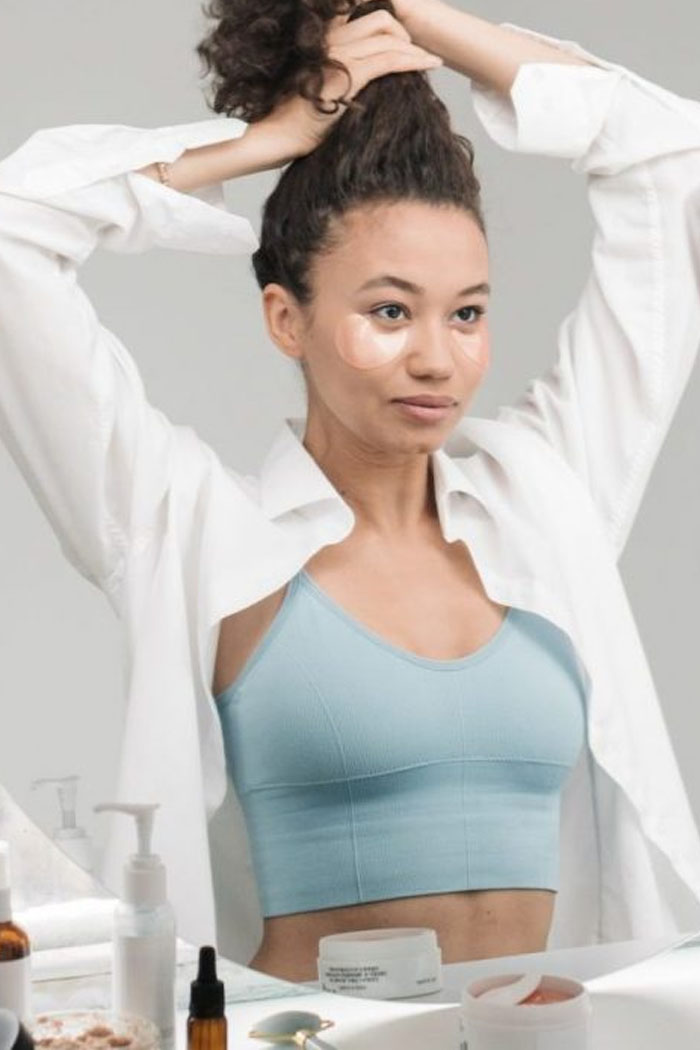Natural ingredients, cruelty-free products, and reusable packaging are all great ways to reduce the environmental impact of your hair and skin care products. But that’s just part of the equation. After all, the cosmetics industry is heavily dependent on an increasingly precarious resource.
A growing trend, waterless beauty means incorporating water-free products into your beauty routine. The push to reduce water consumption in personal care has caught on in recent years, as the detrimental effects of climate change have become abundantly clear.
The beauty industry has already made major progress in reducing plastic and eliminating harmful chemicals, but water usage leaves much to be desired.
Instead of attempting to hydrate your skin or hair with diluted and water-filled products, consider some equally effective alternatives that rely on luxurious powders and oils. Both your skin and the environment will thank you.
Ready to dive into the world of waterless beauty? Here’s what you need to know.
What Is Waterless Beauty?
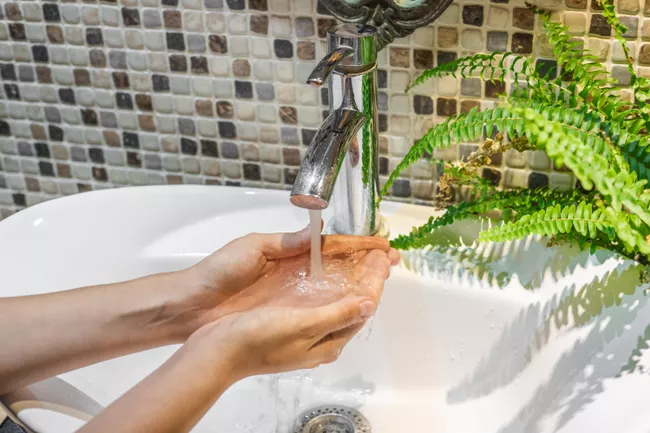
Traditionally, waterless beauty refers to products that don’t contain water. This practice originated in Korea, more for the benefit of the skin than as a conservation effort. By removing what often serves as a filler ingredient, healing oils like coconut, jojoba, and argan can more effectively treat your hair and skin.
More recently, entire beauty brands have emerged based on this waterless concept such as LOLI Beauty and Waterless hair products.
While beauty treatments that don’t require rinsing with water are beneficial to the planet, that’s not the meaning of most “waterless beauty” labels.
Why Go Waterless?
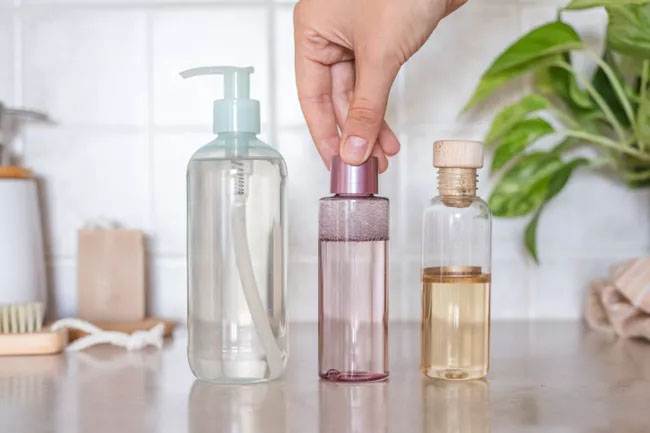
Let’s start with a few personal benefits. Waterless products tend to be more compact than those that contain water, as there’s less total volume. This means that leaving water out of your hair and skin care products makes them lighter and smaller for tucking into your suitcase—not to mention, they require less packaging and consume less carbon to ship.
Waterless products also have a longer shelf-life, making them more affordable over time than their watery counterparts.
If eliminating water from your beauty routine seems too extreme, think about how often you use water to wash your face, rinse your hair, or remove makeup, not to mention all of the water—sometimes listed on the ingredients label as “aqua”—already in your favorite shampoos, lotions, and creams.
Given these sobering facts, it might be time to give waterless beauty products a try. But it’s not really an act of sacrifice; waterless beauty can actually enhance your skin and hair with concentrated ingredients that aren’t diluted by water. The following products are an easy place to start.
Waterless Shampoo
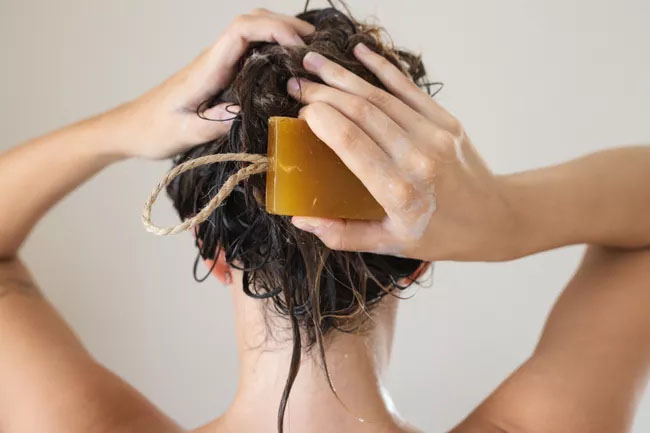
When it comes to waterless shampoo, look to zero-waste brands like Everist, which comes in paste form and becomes activated once the water from your shower makes contact. Shampoo powders, such as those manufactured by Susteau, act in a similar manner. And for people on the go, Trendhunter’s waterless hygiene travel kit contains the essentials.
Perhaps the most popular waterless shampoo option is dry shampoo, which may come as a spray, powder, or foam that you mist or dust on your hair. Dry shampoo soaks up the extra oil and residue. You just apply it to your hair and then brush, comb and style as normal.
Most popular dry shampoo brands are used in between regular shampooing to give hair a body and keep it from looking oily and drab. You can easily make your own DIY dry shampoo with a few natural ingredients and even personalize it to match your exact hair color.
A different alternative, solid shampoos and conditioners obviously require water for rinsing, but they’re still a great option for reducing your impact. In addition to their hair benefits, shampoo bars help eliminate plastic waste and reduce water usage. And shampoo and conditioner bars are perfect for travel—no huge bottle to cram inside a suitcase and no worries about spillage.
The brand Superzero offers an excellent zero-waste version specifically formulated to match salon-grade products, only without any water. As the company’s co-founder explains, “The beauty industry has formulated with water for decades because water is cheap, it’s very profitable to ship bottled water, and plastic bottles create a nice big footprint at the shelf, which helps because consumers have been educated for a long time that ‘bigger is better’—which we obviously do not agree with.”
You can also make your own at home following our four recipes for environmentally friendly shampoo bars for every hair type.
Waterless Cleanser
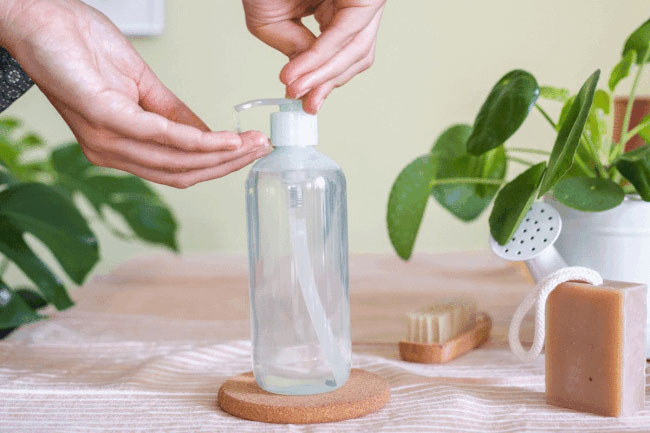
As with the shampoo, there are several types of waterless face and body cleansers available, including no-rinse and oil-based options. Even more innovative are the 100% waterless body wash capsules produced by companies like Haekels. Similar to powdered shampoo, cleansing powders are a great way to achieve clean skin without excessive water consumption.
When thinking about waterless skin care as a whole, masks and moisturizers also come into play. For an easy water-free option, consider applying aloe vera gel as a moisturizer after cleansing your face. For quick, on-the-go skincare, Alleyoop’s waterless cleansing stick can remove makeup and dirt in a pinch.
Finally, a great DIY option for skin care is this luscious vanilla body butter. With only four ingredients—you guessed it; none are water—the cocoa butter and plant-based oils can hydrate your skin with full force.
Waterless Makeup
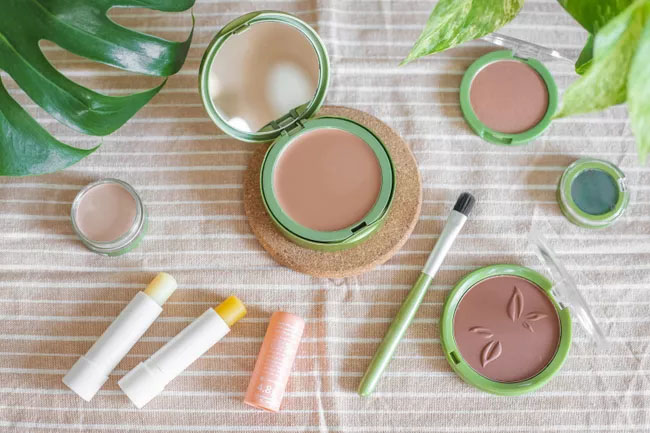
Waterless cosmetics are surprisingly easy to find, and you likely already have a few of these products in your makeup bag.
Mineral foundations, powder blushes, and oil-based serums all steer clear of the water in their ingredients lists. But if your makeup could use an eco-friendly and waterless refresh, Vapour makes an anhydrous color stick that can be easily applied to lips, cheeks, or eyes for a pop of pigment.
One of the more innovative products available, reusable blush papers remove dirt and oil while adding a pinch of color to your cheeks. These blush papers are even recyclable and biodegradable.

